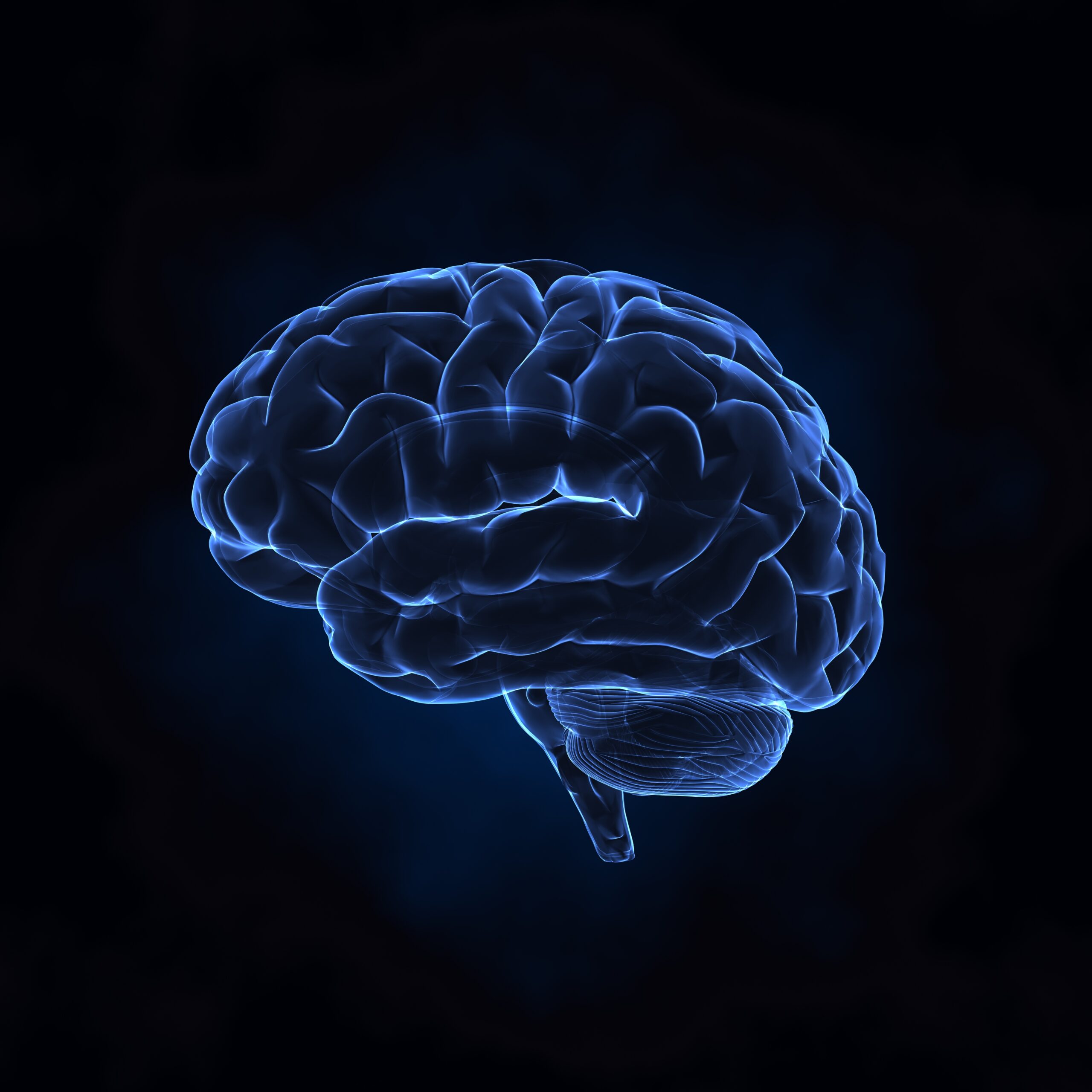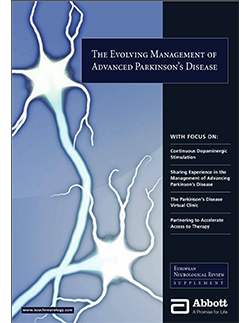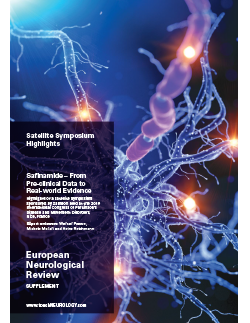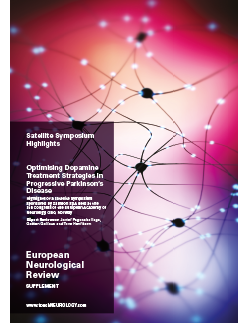THE EVOLVING MANAGEMENT OF ADVANCED PARKINSON’S DISEASE – SUMMER 2012
Parkinson’s disease (PD) is a serious chronic neurodegenerative disease with no cure that affects all aspects of daily living. It is the second most common neurodegenerative disease after Alzheimer’s disease, with an incidence forecast to double by 2050, primarily as a result of an ageing population. The gold standard of treatment, levodopa, has been widely […]
Continuous Dopaminergic Stimulation in Focus
Lessons Learned about Levodopa Motor fluctuations in Parkinson’s disease (PD) were described as early as 1969 by Cotzias et al.1 Subsequent studies showed that many motor fluctuations were associated with low plasma levodopa levels (troughs) that occurred between oral doses of levodopa.2This phenomenon was called the end-of-dose deterioration or ‘wearing-off’ effect. In the 1970s and […]
The management of the later stages of Parkinson’s disease (PD) is greatly impacted by non-dopaminergic problems, such as dementia, depression and falls, and by the emergence of motor complications including motor fluctuations and dyskinesias. Motor fluctuations, such as ‘wearing off’ and unpredictable ‘off’, affect 30–100 % of patients.1–4 Dyskinesias can be ‘on’ (mostly choreatic), biphasic […]
In 1975, it was shown that achieving stable plasma levodopa levels by continuous intravenous infusion of levodopa rapidly stabilised motor fluctuations in Parkinson’s disease (PD) patients.1 However, intravenous levodopa infusion did not become a practical treatment option in PD because of the technical complexity of administration.2 In the mid-1980s, it was shown that enteral (duodenal/jejunal) […]
Management of Advancing Parkinson’s Disease
The non-motor symptoms (NMS) of Parkinson’s disease (PD) are common and often not fully appreciated. They are sometimes referred to as non-dopaminergic symptoms, which in some cases may be a misnomer. NMS are present at all stages of the disease, and are potentially a major source of disability. Some of these symptoms, such as dementia, […]
The timing of continuous dopaminergic stimulation (CDS) therapy is an important consideration in achieving the most favourable motor outcomes. According to the official product information in Germany, levodopa/carbidopa intestinal gel (LCIG) infusion should be used for the ‘treatment of advanced, levodopa-responsive Parkinson’s disease with severe motor fluctuations AND hyper-/dyskinesia when available antiparkinsonian treatment is not […]
Health-related Quality of Life in Parkinson’s Disease In general, measures of Parkinson’s disease (PD) symptoms, biomedical markers or survival do not cover every aspect of the disease relevant or important to the patient. Health-related quality of life (HRQoL) is defined as the perception and evaluation by the patient of the impact that the illness and […]
The Parkinson’s Disease Virtual Clinic
Options for Continuous Dopaminergic Stimulation Therapy In patients with advanced Parkinson’s disease (APD), worsening motor symptoms due to motor response complications and dyskinesia (exacerbated by erratic gastric emptying associated with peroral therapy) may be treated optimally by switching to continuous dopaminergic stimulation (CDS) therapy. There are three CDS therapy options widely available for the treatment […]
Partnering to Accelerate Access to Therapy
With an ageing European population comes an ever increasing societal burden of brain diseases. These illnesses, if managed sub-optimally, cause terrible distress and consume a major proportion of the budgets of healthcare systems. Societal changes also contribute to the growing requirements for the care of those with brain disease. For example, women were traditionally the […]

Trending Topic
Parkinson’s disease (PD) is a complex neurodegenerative condition that predominantly affects older people, with a rising prevalence worldwide.1,2 There are many on-going challenges and unmet needs in PD: difficulties in making an accurate diagnosis (particularly in the early stages of the disease), troubling side effects associated with the available pharmacological treatments, a lack of effective disease-modifying therapies […]
Journal Archive
European Neurological Review is a peer-reviewed, free-to-access, bi-annual neurology journal comprising review articles, case reports, practice guides, theoretical discussions, and original research. It features balanced and comprehensive articles written by leading authorities, addressing the most important and salient developments in the field of neurology in practical terms.
Latest articles videos and clinical updates - straight to your inbox
Log into your Touch Account
Earn and track your CME credits on the go, save articles for later, and follow the latest congress coverage.
Register now for FREE Access
Register for free to hear about the latest expert-led education, peer-reviewed articles, conference highlights, and innovative CME activities.
Sign up with an Email
Or use a Social Account.
This Functionality is for
Members Only
Explore the latest in medical education and stay current in your field. Create a free account to track your learning.






